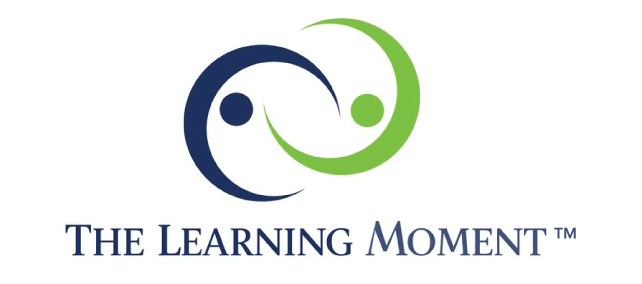In the book The Good Life, Robert Waldinger and Marc Schulz highlight the profound impact of separation and isolation, magnified during the COVID-19 pandemic. Chapter 9 delves into the detrimental effects of social disconnection, emphasizing how the lack of human interaction disrupted our mental and emotional well-being. This reflection on the need for connection resonates deeply with Maslow’s hierarchy of needs, where belongingness is a fundamental human necessity, essential for achieving higher levels of self-actualization.
As someone who has dedicated his career to fostering positive workplace cultures, I have long believed in the power of tribal connections within organizations. Drawing inspiration from the concept of tribal culture as outlined in Seth Godin’s book Tribes and Sebastian Junger’s Tribe: On Homecoming and Belonging, I advocate for creating environments where employees feel a deep sense of belonging and connection.
The Foundation of Belonging
Maslow’s hierarchy of needs places belongingness and love just above physiological and safety needs. This placement underscores the essential nature of social connections for human survival and fulfillment. In the workplace, fostering a sense of belonging can significantly impact employees’ motivation, engagement, and overall well-being. During the pandemic, the abrupt shift to remote work highlighted the void left by the absence of daily interactions, underscoring the importance of maintaining and nurturing these connections even in a virtual environment.
Tribal Culture: A Blueprint for Connection
Seth Godin’s Tribes and Sebastian Junger’s Tribe present compelling arguments for the power of tribal culture—a community united by shared values, goals, and mutual support. In a tribal workplace, every member feels valued and recognized, contributing to a collective mission. This sense of belonging and purpose is crucial for both individual and organizational success.
In my experience, embracing the principles of tribal culture involves creating a workplace where every team member feels like they are part of a larger family. Prioritizing open communication, collaboration, and recognition ensures that everyone feels heard and appreciated. This approach not only enhances job satisfaction but also drives innovation and productivity.

The Positive Power of the Word “Tribe”
Using the word “tribe” in an organizational context can have a profoundly positive impact. A tribe represents a close-knit community bound by loyalty and mutual support. Sebastian Junger, in his book Tribe: On Homecoming and Belonging, discusses how tribal societies provide individuals with a sense of belonging, purpose, and identity. This sense of being part of something greater than oneself is crucial for mental health and overall well-being.
When we refer to our teams as tribes, we emphasize the importance of these deep, supportive connections. It reinforces the idea that each member is valued not just for their work, but for who they are as individuals. This can lead to stronger teamwork, higher morale, and a more resilient organization.
Addressing Concerns About the Term “Tribe”
Some might argue that using the term “tribe” in an organizational context could be seen as appropriating or trivializing the rich histories of indigenous groups. However, the intent behind adopting this term in a business setting is to highlight the positive aspects of community, support, and belonging. By using “tribe,” we aim to foster a sense of unity and shared purpose, drawing on the universal human experience of seeking connection and community.
Not Everyone Belongs in a Tribal Organization
It’s important to recognize that not everyone will thrive in an organization that prioritizes belonging. Competency, character, and performance are crucial factors in maintaining a strong tribal culture. Individuals who do not align with the tribe’s core values and goals or who lack the necessary skills and commitment may find it challenging to integrate and contribute meaningfully. A successful tribal culture depends on having the right people who are not only capable but also committed to the tribe’s mission and values.
The Role of Leadership in Fostering Connection
Leadership plays a pivotal role in cultivating a tribal culture. As leaders, we must be intentional about creating opportunities for connection and fostering an environment where trust and mutual respect thrive. This involves regular check-ins, transparent communication, and creating spaces for informal interactions. Implementing initiatives such as virtual coffee chats, team-building activities, and regular feedback sessions can help maintain strong connections. Periodic in-person interactions at a regular cadence are also essential to ensure that relationships stay strong and personal bonds are reinforced.
Moreover, leaders must embody the values of the tribe, demonstrating empathy, authenticity, and a genuine concern for the well-being of their team members. By doing so, we create a culture of trust and loyalty where employees feel safe expressing themselves and contributing their best work.
The Importance of Ceremony and Tradition
Ceremony and tradition play a significant role in reinforcing tribal cohesion. Incorporating rituals and traditions into business meetings and organizational practices can create a sense of continuity and shared identity. These ceremonies can range from simple team rituals to more elaborate events that celebrate milestones and achievements, fostering a sense of unity and belonging.
The Long-term Benefits of Tribal Connection
The benefits of fostering a tribal culture extend beyond immediate job satisfaction. A strong sense of belonging can lead to increased employee retention, as individuals are more likely to stay with an organization where they feel valued and connected. Furthermore, it enhances resilience, as a supportive community can better navigate challenges and adapt to change.
During the COVID-19 pandemic, organizations with a strong tribal culture were better equipped to support their employees through the uncertainties and anxieties of remote work and social isolation. These companies emerged stronger, with a more cohesive and committed workforce.
The insights from The Good Life, Tribes, and Tribe reinforce the critical importance of fostering a sense of belonging in the workplace. As leaders, it is our responsibility to create environments where tribal connections can flourish, ensuring that every team member feels valued, supported, and connected. By doing so, we not only enhance individual well-being but also drive organizational success and resilience.
In these challenging times, the need for connection has never been more apparent. Let us commit to building and nurturing tribal cultures within our organizations, creating workplaces where everyone can thrive together.
READY TO GET STARTED?
Get in touch
Send a message with any questions you might have about reaching your workplace goals.

